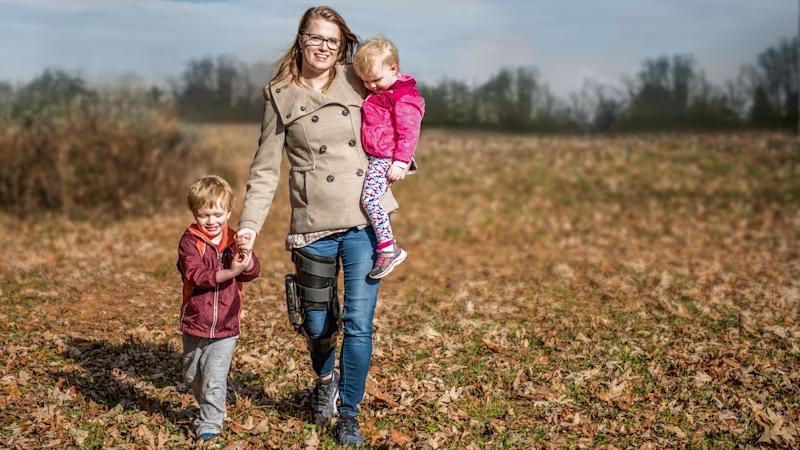Meniscus injuries
The doctor may recommend that movement is temporarily limited after surgery on the menisci. Partial weight bearing with limited movement is possible with the help of orthoses.
Causes, symptoms and treatment
The knee joint has an outer and an inner meniscus, two half-moon-shaped fibrous cartilage discs of different thicknesses located between the femur and the tibia.
The menisci ensure that these two bones with differently shaped surfaces work together smoothly. They enlarge the knee joint surface and absorb loads due to weight, ensuring they are evenly distributed across the joint. Meniscus injuries put the stabilising, impact absorbing and load distributing effect of the menisci at risk.
Ottobock supports and orthoses

Causes
A meniscus injury often occurs during sports, due to an accident or because of an uncontrolled movement. Abrupt movements are usually to blame, such as turning quickly or stopping suddenly. The knee is rotated in a detrimental manner, pinching and rupturing the meniscus material. Meniscus ruptures occur in various forms and with different degrees of severity.
Another cause that must not be disregarded, especially in older people, is a degenerative change in the menisci. The meniscus material only renews itself to a minor extent, so it is reduced with increasing age. The menisci become brittle and small cracks form. Then the meniscus can rupture even during everyday movements of the knee. However, degenerative changes of the meniscus material are also possible in younger years due to excessive strain on the joint. Possible causes include being overweight, leg axis malpositions or severe strain due to unilateral competitive sports.
Diagnosis
A meniscus injury is diagnosed by a doctor. A detailed medical history and assessment are complemented by imaging procedures. An arthroscopy (joint endoscopy) is often carried out as well.
Symptoms
Symptoms of a meniscus injury include considerable pain and movement limitations in the affected knee joint. Additional indications of meniscus damage are stabbing pain during movement, pronounced swelling of the entire knee joint, function limitations and local overheating and reddening in the affected area.
Therapy
Therapy usually takes the form of a minimally invasive procedure called a joint endoscopy (arthroscopy). Loose cartilage material is removed and torn pieces of the menisci are sutured. The doctor often recommends partial weight bearing with movement limitation, giving the affected area time to heal. Orthoses are regularly used for this therapy.
Back to everyday activities: three steps to an Ottobock orthotic
- Here you’ll find an overview of all the orthotics and supports that could potentially help you. Take the list with you to your next doctor’s appointment.
- Talk to your doctor about which orthotic is best suited to your symptoms and condition. Your doctor can then write you a prescription for the appropriate orthotic.
- Take your prescription to a medical supply company. They’ll give you your new orthotic and adjust it to fit your exact body measurements.
